By Annie Whitehead
It’s the time of year when students go off to college/university, and I’m casting my mind back to my own student days …
The Anglo-Saxon world which I studied was rather testosterone-fueled: kings whacking seven bells out of each other, male priests sermonising and occasionally fighting, and of course, those marauding invaders.
No matter – I loved the subject when I was an undergraduate, and I still do. As much as I enjoyed my studies, I’d had a yearning to be a writer, and during those lectures, plans were forming. Some names and characters interested me more than others, and I’ve been lucky enough to be able to write about them. But one name really stood out. And this person had no testosterone.
We were studying one of the first pieces of propaganda; a document designed to show off its subject in the best possible light – a real piece of spin. It was commissioned by this same high-ranking person and the rewards of studying it lie in what it glosses over or hides as much as in what it reveals.
Queen Emma: married to not one, but two kings. Mother to not one, but two kings. Her first husband was an Anglo-Saxon, her second was the son of a conquering Dane, but she seems to have happily acquiesced. The document we were studying was the Encomium Emmae Reginae and it was written when her family life had descended into the realms of TV Soap drama.
Emma had sons by her first husband, Aethelred the Unready. Cnut (Canute) had sons by his first wife (or concubine, depending on your point of view,) Aelfgifu of Northampton. And then Emma and Cnut had a son together. So when Cnut keeled over, there was yet more testosterone, this time much of it Scandinavian, as the sons of Cnut slugged it out with their various half-brothers.
This confusing period was summed up rather amusingly in 1066 And All That: “Canute had two sons, Halfacanute and Partacanute, and two other offspring, Rathacanute and Hardlicanute.” (WC Sellar and RJ Yeatman) They went on to say that “After his death … [the] kingdom was divided between two other sons, Aftercanute and Harold Harebrush.”
In fact, when Cnut died, he was succeeded by his son by Aelfgifu, Harold (Harefoot). Harold reigned for only 5 years and was succeeded by Cnut’s son by Emma, Harthacanute. Brotherly love being in short supply, Harthacanute showed his ‘devotion’ to his dead half-brother by digging up his body and throwing it into a bog. He didn’t last very long, either – he died at a wedding feast after supping a drink (was it poisoned?) and was succeeded by Emma’s son by Aethelred – remember him? – Edward the Confessor. Thus the wave of Danish kings was over.
In the Encomium, Emma’s marriage to Aethelred is not mentioned at all, and it is indirectly implied that Emma’s children by him are in fact Cnut’s. It suggests that Harold was merely regent for Harthacanute and denies that Harold is Cnut’s son. It goes further, saying he wasn’t even Aelfgifu’s son, and thus not even born a noble. Emma’s spin doctors were certainly skilled.
Wow. What a woman. What a family!
As Pauline Stafford noted, Emma was the “first of the early medieval queens” to be depicted through contemporary portraiture. I yearned to write about this woman, who, apparently later on in life, was also put on trial by her surviving son Edward the Confessor.
I had to put my novel-writing plans on hold for a wee while though – apparently it is de rigueur to study for and pass one’s final exams if one wants to be awarded a Bachelor’s degree – and then I had the inconvenience of having to find myself a job.
One night, years later, sitting in a freezing cold cottage in the English Lake District, I picked up the phone, hoping my erstwhile tutor and expert on all things Anglo-Saxon, Ann Williams, still had the same number (these were pre-internet days!) She did. Did she have a book that she could recommend to get me started on deeper research on Emma? She did: Pauline Stafford’s Queen Emma and Queen Edith was, apparently, a great place to start.
But life has a habit of getting in the way of plans, and so I shelved the magnum opus while I got on with the business of courting, marriage, and having children. At home, with three children under the age of four, I occasionally managed to read a book or two; among them, novels by Helen Hollick, who had just brought out her Arthurian trilogy.
My children got to school age, and I decided it was time to get writing. And then – disaster! At the time, I was a member of an old-fashioned book club which sent out a monthly magazine (pre-internet days, remember!) and there it was – A Hollow Crown, by Helen Hollick, a story of Emma of Normandy.
I didn’t know whether to be devastated that I had been beaten to it, thrilled that I could now read Emma’s story in fiction form (by an author whom I admired) or be smug that I’d had a very good idea for a novel! (And doesn’t that haunt all authors; a conflict between hoping that no-one else will have the same idea as you, and panic because your idea is not popular, and won’t sell?)
BUT – it turns out that Emma wasn’t the only intriguing and under-represented woman in Anglo-Saxon England. I’d long had an interest in Ethelred of Mercia, who rode onto the pages of history seemingly from nowhere. I went back and researched his life, and realised that here was another great story.
The more I read, the more I realised that the story was not so much Ethelred’s as that of his wife, Aethelflaed, Lady of the Mercians – daughter of Alfred the Great, and ruler of Mercia in her own right. That idea became, To Be A Queen, the novel which was recently awarded an IndieBRAG Gold Medallion.
And there’s a satisfying footnote: My novel was also chosen as Editor’s choice, and thus long-listed for Indie Book of the Year 2016 by the HNS (Historical Novel Society). The reviewer and Managing Editor who chose it? Step forward one Ms. Helen Hollick, who also recently invited me to collaborate with her and seven other authors on a new e-book. I think I can forgive her for beating me to Emma!
About Annie Whitehead:
Annie’s first novel, To Be A Queen, the story of Aethelflaed, daughter of Alfred the Great, was long-listed for the Historical Novel Society’s Indie Book of the Year 2016, and has been awarded a B.R.A.G. Gold Medallion. Alvar the Kingmaker has also just been award the B.R.A.G. Gold Medallion. She has twice been a prizewinner in the Mail on Sunday Novel Writing competition, she won first prize for nonfiction in the new Writing Magazine Poetry and Prose competition, and she has had articles published in various magazines, on a wide range of topics. She is an editor for the English Historical Fiction Authors’ blog, and, most recently, she has contributed to the anthology of short stories, 1066 Turned Upside Down, in which nine authors re-imagine the events of 1066, and which has just been awarded HNS Editors’ choice and long-listed for Book of the Year 2017.
Author Website
Family Tree -Wikipedia Source here
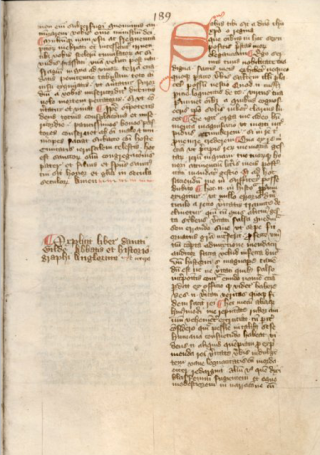
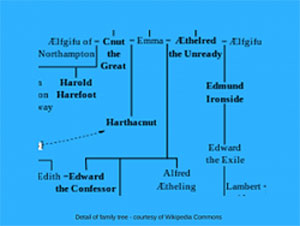
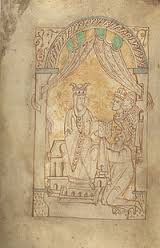
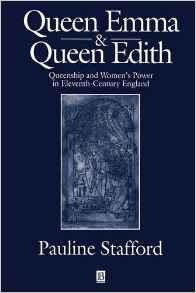
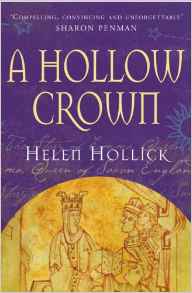

Leave a Reply